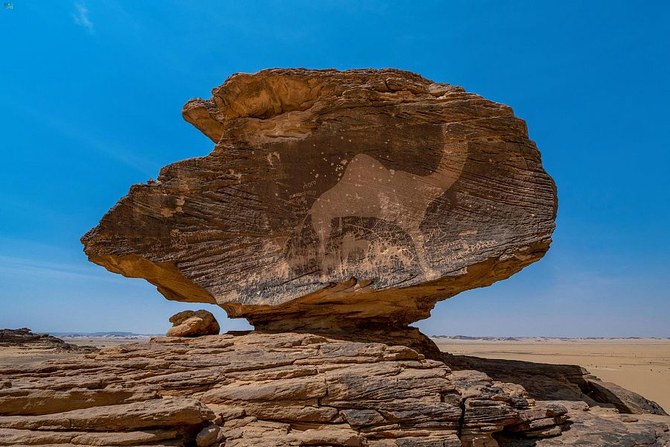JEDDAH: The ancient rock inscriptions at Hima in southwest Saudi Arabia on Saturday became the sixth location in the Kingdom to be included on UNESCO’s world heritage list.
Saudi Arabia has a “rich heritage of human civilizations. Efforts have borne fruit in making it known to the world,” Saudi Culture Minister Prince Badr bin Abdullah bin Farhan said.
Hima, in the western region of Najran, was a hub for caravans on trade and Hajj routes between the southern parts of Arabia and Mesopotamia, the Levant and Egypt. Travelers left behind a substantial collection of rock art depicting hunting, wildlife, plants, symbols and tools, and thousands of inscriptions in ancient scripts such as Musnad, Thamudic, Nabataean and early Arabic.
Wells in the area, once a vital source of fresh water in the vast desert of Najran, date back more than 3,000 years and contain fresh water to this day.
“We are thrilled to have this exceptional ancient site recognized by UNESCO as a world heritage site. The area has outstanding universal value, providing us with many lessons about the evolution of human culture and life in ancient times,” said Dr. Jasir Al-Herbish, chief executive of the Heritage Commission.
“We are working to preserve the area and conduct research to further understand the rock inscriptions, and are looking forward to welcoming more local and international visitors to come and see this historic cultural site for themselves.”
Hima joins Madain Saleh, Tarif in Diriyah, historic Jeddah, the rock art in Hail, and Al-Ahsa oasis on the UNESCO list.
The preservation and protection of the Kingdom's cultural and natural heritage is a key part of the Kingdom's 2030 Vision.
Overseen by the Heritage Commission, a raft of new discoveries has cemented the country’s reputation as a go-to destination for archeologists, historians and scientists looking to understand human history across the region.
Last year, the Commission announced one of the Kingdom's most ground-breaking discoveries – ancient human and animal footprints, dating back more than 120,000 years, in Tabuk, marking the first evidence of human life on the Arabian Peninsula.
The Kingdom has also taken serious measures toward protecting national and international heritage. In 2019, the Ministry of Culture signed a Memorandum of Understating with UNESCO to contribute $25 million to the organization’s strategy for the preservation of heritage worldwide.
(With SPA)


































